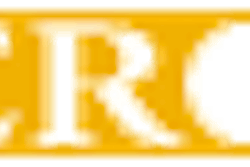As integrated delivery networks eye implementation of enterprise-wide digital image management systems, they often face the considerable challenge of building a suitable infrastructure to handle hefty storage loads and thorny image-access requirements. Hoping to smooth that process is TeraMedica, a Mayo Clinic spin-off that debuted at the 2001 RSNA meeting in Chicago.
Milwaukee-based TeraMedica has its roots in the radiology informatics lab at Mayo in Rochester, MN. Formed in 1999, the lab was given the mission of analysis and design of a digital radiology environment encompassing the imaging departments of Mayo Clinics in Rochester; Scottsdale, AZ; and Jacksonville, FL.
Taking advantage of enterprise infrastructure technology and knowledge developed during this process, TeraMedica began operations in early 2001.
"We view ourselves as IT infrastructure in the form of data warehousing for medical images," said president and CEO Christopher Hanna, a former ALI Technologies executive who joined the company last year.
TeraMedica Enterprise Asset Manager (TEAM)'s data repository can store radiology and cardiology information, as well as any DICOM information objects. It can also archive non-DICOM images and other data such as digital voice dictation, reports, physiological data, and other transaction information, according to the firm. TEAM is available in Unix and NT-based configurations.
By allowing institutions to consolidate all image storage onto one data repository, TeraMedica believes that its offering yields a more logical and cost-effective approach to an enterprise-wide, multifacility digital imaging environment. Access to the repository can be provided through a variety of means, including Web clients for desktop access by clinicians, a HIS viewer, and traditional radiology PACS workstations, Hanna said.
"It's great that the radiologist is fully digital in his or her workspace, but (to allow) the radiologist to get his or her product into the hands of referring physicians so they can consult with the patient really requires another aspect of the archive technology, which is key," he said. "The technology has to have the ability to serve either a full image set or select image set up to the clinical desktop. We are very intent on being able to provide the (clinical viewing capability) to the desktop."
TEAM can be set up in a "captive ASP" environment, whereby a turnkey system is placed in the IDN's data center. The data center then delivers the enterprise service across all of its facilities over intranets. This allows the IDN to retain control of its image assets and also make use of interfacility communications networks already in place, Hanna said.
TeraMedica can sell its services either through a capital purchase model or a fee-per-use approach, said Bill Burns, vice president of sales and marketing. Depending on the number of procedures, sites, and clients attached to the archive, an average starter kit for an IDN would be approximately $3 million to $5 million, he said.
The firm began its first installation at the Mayo Clinic in Rochester on March 1, with an expected completion date of mid-April. The system will link 40 imaging devices (20 MR and 20 CT) and five different facilities affiliated with the Mayo Clinic. TeraMedica also has four other IDNs signed on to use its services, Burns said.
By Erik L. RidleyAuntMinnie.com staff writer
March 13, 2002
Related Reading
Integration, security star in PACS exhibits, November 25, 2001
ALI teams up with Mayo Clinic venture, March 28, 2001
Copyright © 2002 AuntMinnie.com



















